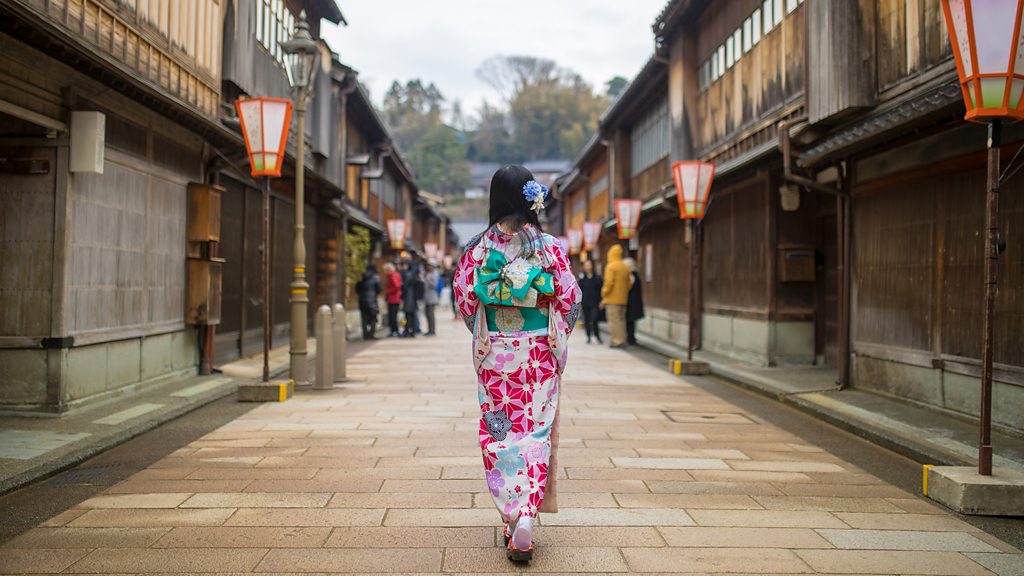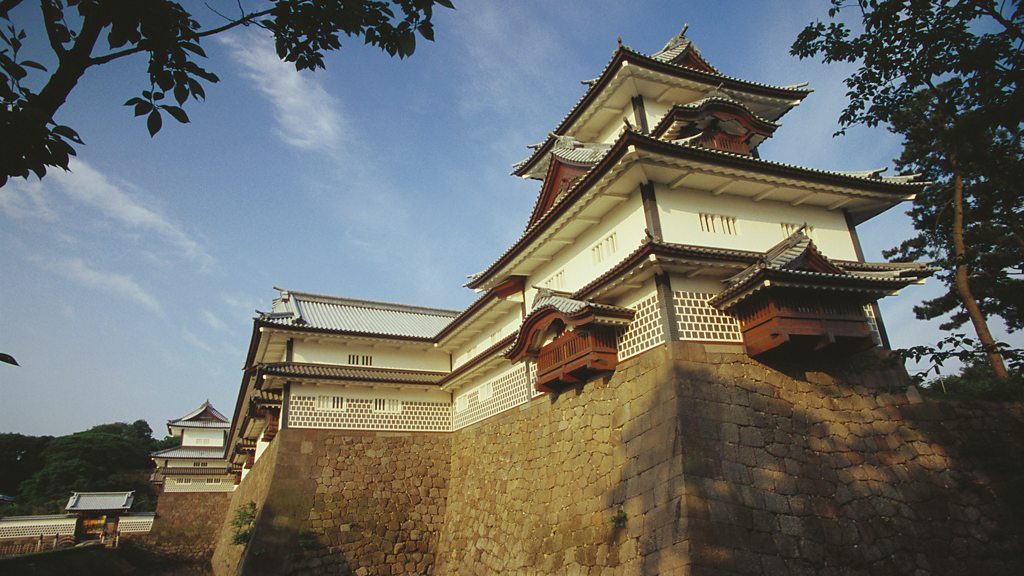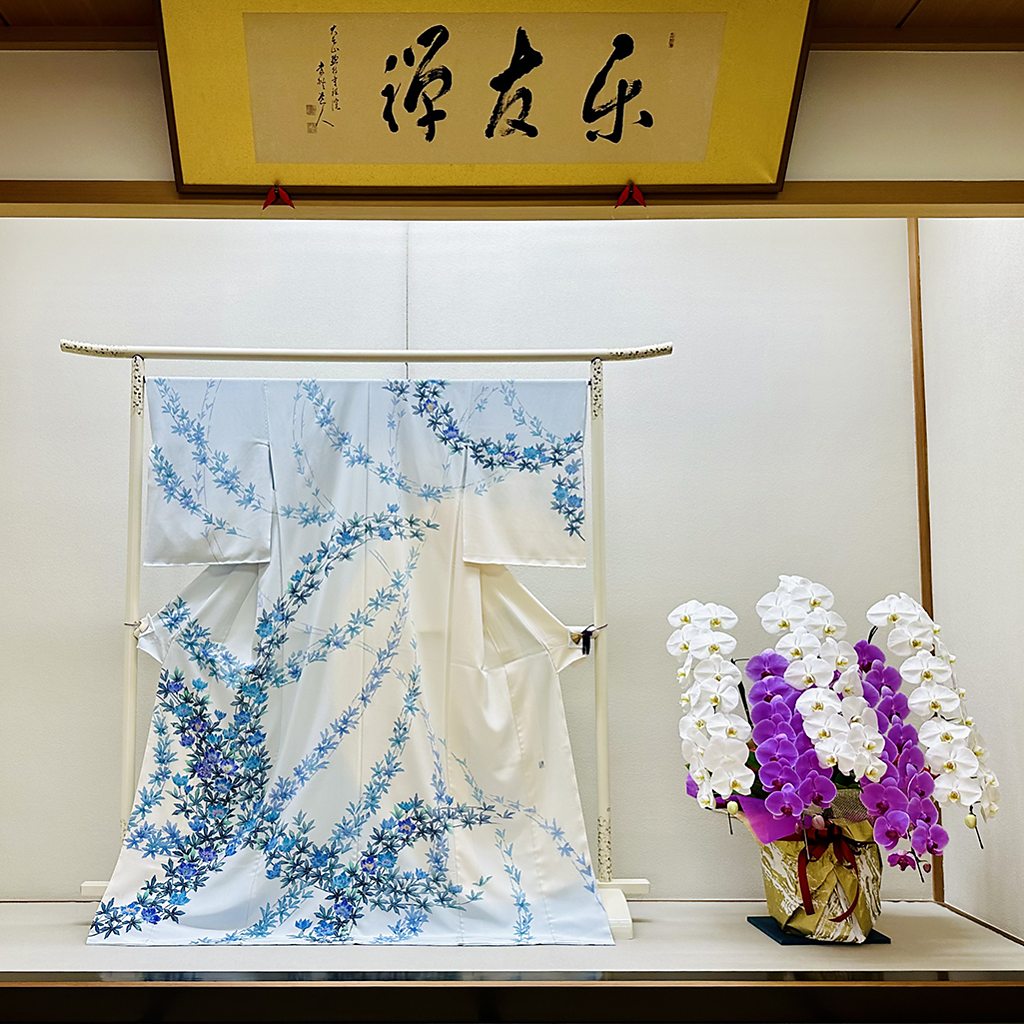Art
The true story of Japan’s samurai city that chose art over war

The breakout series Shōgun has renewed interest in the clashing swords and political maneuvering of Japan’s feudal era – and the city of Kanazawa is an excellent place to learn more.
Long after the end of Japan’s feudal era, there’s still a sense of power and prosperity in Nagamachi, a low-slung neighbourhood at the foot of Kanazawa Castle. Nagamachi’s grand residences, set behind thick earthen walls, were once home to high-ranking samurai retainers of the Maeda family, the powerful clan that ruled the Kaga domain (present-day Ishikawa and Toyama prefectures) from 1583 until the abolition of the shōgunate at the beginning of the Meiji era (1868–1912).
At the Nomura Residence, which is open to the public, I’m greeted first by an imposing full suit of armour and then pass through rooms filled with delicate craftsmanship towards a tearoom overlooking an ornamental garden. Finally, I end up in front of a display of swords and a letter from a daimyō (feudal lord) thanking his vassal for the gift of an enemy’s head. This juxtaposition of beauty and brutality is a reminder of the samurai’s seemingly paradoxical cultivation of the arts of both war and culture.
The breakout TV series Shōgun has renewed interest in the clashing swords and political manoeuvring of Japan’s turbulent Warring States period (roughly 1467-1615), when rival daimyō fought for control of the country. Bringing to life the political landscape of early 17th-Century Japan, the show reimagines the lead up to the establishment of the Edo period under the Tokugawa shōgunate, founded in 1603 by Ieyasu Tokugawa (inspiration for the fictional Lord Toranaga), which unified Japan and ended more than a century of constant warfare. A visit to Kanazawa, the capital of Ishikawa Prefecture, reveals the lasting legacy of a surprising tactic that helped to maintain that hard-won peace and stability.
A city of around 465,000 residents on Japan’s west coast, Kanazawa’s well-preserved Edo-period townscapes, like those of Nagamachi and its three geisha districts, have the kind of historical atmosphere and cultural appeal that have garnered many places in Japan the nickname “little Kyoto”. But, says Toshio Ōhi Chōzaemon XI, the 11th-generation head of a local family known for its rustic style of pottery, made without a wheel, “We are not trying [to be] that kind of city”.

He slides open a door to reveal a tearoom in the back of his Ōhi Museum, which, attached to an old samurai residence on the other side of the castle, displays works by each generation of Ōhi potter. He explains that compared to the Imperial Court culture of Kyoto, “We have [more] freedom. We don’t have to follow their tight traditions.” It’s this sensibility, which Ōhi calls the “samurai spirit”, that allows Kanazawa to preserve the beauty of its traditions while reinventing them for modern life.
In the 17th Century, when wealth was measured in koku (the amount of rice a domain produced), the Maeda were second only to the Tokugawa. “They were very powerful [and] had lots of resources [including] weapons,” says Jun Murakami, assistant director of the Kanazawa Utatsuyama Kogei Kobo, a craft school located in a hilly, wooded part of the city.
Murakami explains that the Maeda worried their arsenal would appear threatening to the ruling shōgunate – although the Maeda were by then allied with Tokugawa, he had been an adversary of the first Kaga lord Toshiie Maeda (inspiration for Sugiyama in the Shōgun series) who died in 1599. The Maedas’ solution was to embrace a kind of soft power: they redirected their weapon-making resources to crafts.
“It was like, ‘yes we are powerful, but we are not planning to make war’,” explains Murakami.
The Maeda established a craft-making workshop, Osaikusho, in Kanazawa Castle, inviting master craftspeople from around Japan to teach there and set about turning everyday objects into works of art. The school broke with strictly delineated craft-making tradition by inviting craftspeople of different disciplines to work together, thus moving traditions forward.

While pointing out pieces produced by the school, from a tissue box intricately decorated with metal inlay to gleaming katana swords that Osaikusho craftspeople transformed from lethal instruments to works of art, Murakami explains the Maeda’s lasting impact. If they “didn’t have the mentality of expanding crafts and using those resources to create this school,” he says, “maybe nowadays Kanazawa would not be as famous for its arts and crafts”.
Kanazawa has 22 kinds of traditional arts, including kutani-yaki (pottery), urushi (lacquerware), Kaga yūzen (silk kimono dying) and Kaga zougan (inlay metalwork). It is also the national capital of the production of kinpaku (gold leaf) and the many glittering things made with it, from Buddhist shrines to facial masks. Throughout history, Kanazawa’s promotion of crafts has been guided by a yearning for peace. Soon after World War Two, the Kanazawa College of Art was founded with the philosophy of “contributing to the peace of mankind through the creation of beauty”. In 2009, following a successful application that argued that the city could contribute to “international cooperation and world peace through the promotion of craftwork”, Unesco named Kanazawa Japan’s first City of Crafts and Folk Art.
Today, the contemporary challenges of a shrinking population and shifting culture mean that Kanazawa’s craft heritage is kept alive by a diminishing number of craftspeople. Nevertheless, guided by the dynamic attitude of its past feudal lords, the city is committed to preserving its crafts. In the spirit of the old Osaikusho, Kanazawa established the Kobo craft school in 1989. There, artists on scholarships study ceramics, lacquerware, silk dyeing, metalwork and glasswork. Murakami says that the school wants the students to challenge themselves, both in their art and attitudes. “They have to adapt to keep the tradition going [and meet] the needs of the modern times.”
More like this:
• Why you should visit Japan’s small but mighty ‘little Kyoto’
• The masters of a 5,000-year-old craft
• The Japanese philosophy for a no-waste world
And now artisans have opened their studio doors to visitors, allowing travellers to learn how they are expanding the possibilities of traditional crafts. A customisable programme organised by the city takes visitors into workshops, including that of Kaga yūzen artist Hitoshi Maida, who incorporates contemporary approaches, such as geometric designs, in his kimonos.

Comprising elements of ceramics and lacquerware, the tea ceremony represents a culmination of traditional craftsmanship – Kobo students are required to spend two years studying chadō (the way of tea) and must craft all their own elements, from bowls to kimono. Again, it’s a legacy of the Maeda, who were particularly fond of the tea ceremony and wanted Kanazawa to be known for its highest expression, which meant producing the highest quality of utensils.
In 1666, the Maeda invited the first Ōhi Chōzaemon to Kanazawa, where he found a soft clay in a neighbouring village. Building on the techniques he’d learned in Kyoto, he used this clay to develop the free-wheeling style of pottery known as Ōhi ware. Today, visitors to the Ōhi Museum can select a bowl from its collection and drink tea from it in a room designed by Japanese starchitect Kengo Kuma.
The delicate setting of a tea ceremony typically makes me feel like a clumsy interloper and, at the museum, this sense is only heightened by handling a valuable work of art. But I want to better understand the practice that I’ve come to see as the key to Kanazawa’s craft heritage. So, the next morning, as pink plum blossoms herald spring’s arrival, I head for Kenroku-en, one of Japan’s “great three” gardens, established by the Maeda in their castle grounds in the late 16th Century. Here, in the Kenrokutei building where fourth Kaga daimyō Tsunanori Maeda received visitors with tea, Oceáne Dubuc and Makiko Uda are helping open up the practice to Japan’s modern and increasingly diverse society.
“The first time I joined a Japanese tea ceremony, nobody explained what to do,” says Dubuc, who is from Toulouse, France. “I was really stressed so I couldn’t appreciate it.” Hoping to break through this barrier, Dubuc realised, “We should share this tradition for it not to die.” While she whips matcha, Uda adds that Japanese culture is often misunderstood, “even by Japanese people”. Dubuc sits next to me and gently explains each element, from what to say when receiving the bowl to turning it to admire its artistry. Peeling back the curtain like this, Dubuc says “let(s) people enjoy it”.
When you understand the tea ceremony, I realise that there is much to enjoy. Dubuc and Uda explain that chadō is about appreciating and showing gratitude for a moment in time that will never exist in quite the same way again. I start to understand why this tradition can promote peace or at least, more realistically, inner peace. The way of tea, Dubuc says, referring to the philosophy of Sen no Rikyū, who raised the tea ceremony to an art form in the 16th Century, is “harmony”.

Art
$5.2m for a duct-taped banana: has the buyer of Maurizio Cattelan’s artwork slipped up? – The Guardian
[unable to retrieve full-text content]
- $5.2m for a duct-taped banana: has the buyer of Maurizio Cattelan’s artwork slipped up? The Guardian
- A banana duct-taped to a wall sold for $6.2 million at a Sotheby’s art auction USA TODAY
- Is this banana duct-taped to a wall really worth $6.2 million US? Somebody thought so CBC.ca
Art
Michael Nicoll Yahgulanaas on mixing Haida art with Japanese manga – CBC.ca
[unable to retrieve full-text content]
Michael Nicoll Yahgulanaas on mixing Haida art with Japanese manga CBC.ca

Source link
Art
Duct-taped banana artwork auctioned for $6.2m in New York – BBC.com
[unable to retrieve full-text content]
- Duct-taped banana artwork auctioned for $6.2m in New York BBC.com
- A duct-taped banana sells for $6.2 million at an art auction NPR
- Is this banana duct-taped to a wall really worth $6.2 million US? Somebody thought so CBC.ca
-

 News21 hours ago
News21 hours agoEstate sale Emily Carr painting bought for US$50 nets C$290,000 at Toronto auction
-

 News21 hours ago
News21 hours agoClass action lawsuit on AI-related discrimination reaches final settlement
-

 News21 hours ago
News21 hours agoCanada’s Hadwin enters RSM Classic to try new swing before end of PGA Tour season
-

 News22 hours ago
News22 hours agoAll premiers aligned on push for Canada to have bilateral trade deal with U.S.: Ford
-

 News21 hours ago
News21 hours agoTrump nominates former congressman Pete Hoekstra as ambassador to Canada
-

 News21 hours ago
News21 hours agoEx-student pleads guilty to fatally shooting 3 University of Virginia football players in 2022
-

 News21 hours ago
News21 hours agoFormer PM Stephen Harper appointed to oversee Alberta’s $160B AIMCo fund manager
-

 News21 hours ago
News21 hours agoComcast to spin off cable networks that were once the entertainment giant’s star performers




















